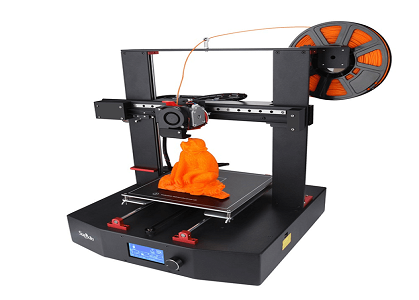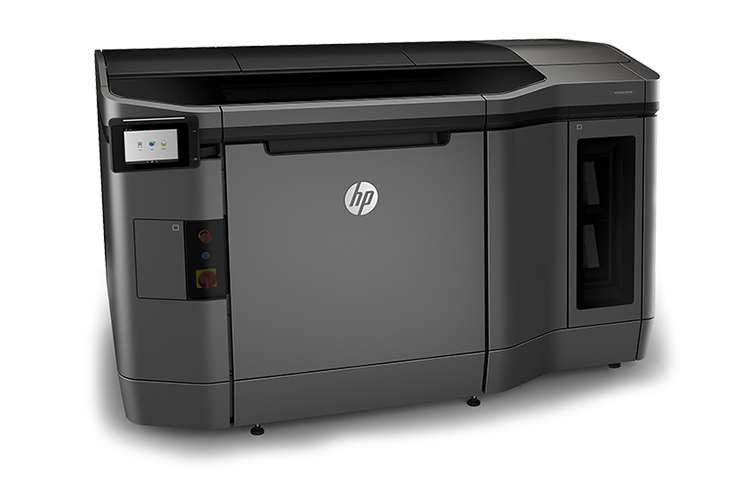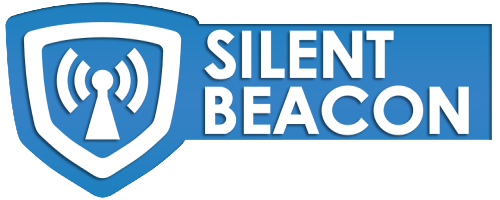3D PRINTING
3D printing uses computer-aided design (CAD) to create three-dimensional objects through a layering method. Sometimes referred to as additive manufacturing, 3D printing involves layering materials.

SLA (Stereolithography)
Stereolithography (SLA) produces components using a precise UV laser to cure and solidify thin layers of a photo-reactive resin. One of the most accurate 3D printing technologies, SLA is ideal for concept models, rapid prototypes, master patterns, form and fit studies, and investment casting patterns. SLA parts can be clear, and can be finished in multiple ways to meet your needs, including painting, plating, and the installation of threaded inserts or other components. In addition, we can section and bond multiple pieces of a larger part design quickly and seamlessly to create oversized models.

BENEFITS
Superior surface finish with multiple finishing options. Fast lead times.
LEAD TIME
Most SLA projects ship out in a standard lead time of 3 – 5 business days, but this can often be expedited if necessary.
TOLERANCES
SLA prototypes can achieve tolerances of +/- .005” for the first inch, plus an additional +/- .002” for each additional inch.
BUILD LAYER THICKNESS
Standard resolution parts are built with layers that are .005” – .006” thick. High resolution builds are closer to .002” – .004” thick.
RECOMMENDED MINIMUM FEATURE SIZE
Standard resolution parts have a recommended minimum feature size of .025” – .035”, while high resolution builds can produce features as small as .010” – .015”.
Single piece build size is as large as 29″ x 25″ x 21″
Oversized parts can be expertly sectioned and bonded using proprietary internal mechanical interlocking features.
IDEAL USES OF SLA
- Fit & form testing
- Mock ups
- Show & concept models
- Master patterns for silicone molds
- Small complex end-use parts
- Clear “lens like” prototypes
- Medical Models
- Casting Patterns
- Fixtures used in traditional manufacturing
SLA PRINTERS
- SLA iPro 8000
- ProJet 7000HD
- ProX 800
SLA MATERIALS
- ABS Like White
- ABS Like Black
- ABS Like Gray
- High Strength ABS Like
- High Temp ABS Like
- High Temp PC Like
- PC Like Frosted
- PC Like Waterclear
- PC Like White

SLS (Selective Laser Sintering)
Selective Laser Sintering (SLS) creates tough and geometrically intricate components using a high-powered CO2 laser to fuse powdered thermoplastics. As a part is made, it remains encased in powder, creating a built-in support system. This eliminates the need for specific support structures and allows for complex geometries. SLS production parts can be strong, water and air-tight, heat resistant, and made out of a range of nylon options. SLS parts are ideal for functional testing, rapid prototyping, and additive manufactured parts, and are a great option for applications requiring a high heat or chemically resistant material.
BENEFITS
Durable and strong parts. Heat and chemically resistant.
LEAD TIME
Most SLS projects ship out in a standard lead time of 3 – 5 business days.
TOLERANCES
SLS prototypes can achieve tolerances of +/- .005” for the first inch, plus an additional +/- .002” for each additional inch.
BUILD LAYER THICKNESS
SLS parts are typically built with a standard layer thickness of .004” – .005”.
RECOMMENDED MINIMUM FEATURE SIZE
SLS parts have a recommended minimum feature size of .030” – .035”. Maximum single piece build size is 22″ x 22″ x 30″ on our sPro 230 using Duraform Nylon materials.
IDEAL USES FOR SLS
- Direct Digital Manufacturing (DDM)
- High volume customized functional parts
- Prototypes requiring high heat resistance
- Under the hood automotive components
- Living hinges & functional enclosures
- Low volume rugged production parts
SLS MATERIALS
- Nylon
- Glass Filled Nylon
- Durable Nylon
SLS PRINTERS
- sPro 60 HD
- sPro 230
- ProX SLS 500
- EOS P 396
SLS FINISHING OPTIONS
- Cyanoacrylate Dip (Water/Air tight)
- Painted
- Bead Blasting
FDM (Fused Deposition Modeling)
Fused Deposition Modeling (FDM) is an additive manufacturing technology that builds parts up layer-by-layer by heating and extruding thermoplastic filament. Ideal for building durable components with complex geometries in nearly any shape and size, FDM is the only additive manufacturing process that uses materials like ABS, PC-ISO polycarbonate, and ULTEM 9085. This means FDM can create parts and prototypes with outstanding thermal and chemical resistance and excellent strength-to-weight ratios. With our fast lead times and finishing options, FDM is a smart choice for anything from concept models to engineering models and production parts.

BENEFITS
Durable and strong parts made from extruded engineering grade plastics. Multiple colors available.
LEAD TIME
Most FDM projects ship out in a standard lead time of 3 – 5 business days.
TOLERANCES
FDM prototypes can achieve tolerances of +/- .005” for the first inch, plus an additional +/- .002” for each additional inch.
BUILD LAYER THICKNESS
FDM parts are typically built with a layer thickness of .007” – .010”.
RECOMMENDED MINIMUM FEATURE SIZE
FDM parts have a recommended minimum feature size of .025” – .030”.
Single piece build size is as large as 36″ x 24″ x 36″ however, larger components can be printed in sections and bonded together using industrial adhesive to create a nearly seamless assembled part.
IDEAL USES OF FDM
- Manufacturing aids
- Low volume production parts
- Jigs and fixtures
- Functional prototypes
- Master patterns
- Threaded inserts installed mid-build
- End use material validation
FDM MATERIALS
- ABS ESD7
- ABS P400
- ABS M30
- ABS M30i
- PC-ABS
- PC
- PC-ISO
- ULTEM 1010
- ULTEM 9085
- PPSF/PPSU
FDM PRINTERS
- Fortus 900mc
- Fortus 450mc
- Fortus 250mc
- Dimension 1200es
FDM FINISHING OPTIONS
- Support Removal
- Painted
- EMI Shielding

MJF (Multi Jet Fusion)
With speed unseen in additive manufacturing before and robust material options, Multi Jet Fusion (MJF) can help cut your project’s time to market. Each MJF printer utilized by PrintForm is calibrated to print up to 40,000 unique production parts a week. Previously the decision between function (SLS & FDM) and surface (SLA & PolyJet) was the classic engineer’s conundrum. MJF brings the best of each to offer functional cosmetic parts.
MJF utilizes fusing and detailing agents over a powdered nylon 12 building area, with infrared lamps fusing an entire layer in a single pass producing functional, geometrically complex parts .005″ layers at a time – with mechanical properties that are comparable to injection molded parts.
BENEFITS
Superior surface finish, texture and properties representative of molded parts with multiple finishing options. Fast lead times.
LEAD TIME
Most MJF projects ship out in a standard lead time of 3 business days, but this can often be expedited if necessary.
TOLERANCES
MJP parts can achieve tolerances of +/- .005” for the first inch, plus an additional +/- .002” for each additional inch.
BUILD LAYER THICKNESS
Standard resolution parts are built with layers that are .004″-.005” thick.
RECOMMENDED MINIMUM FEATURE SIZE
.020″ / .5 mm (XY plane is .012” [.3mm] and for the Z plane .020” [.5mm])
Single piece build size is as large as 10x13x14″ however, larger components can be printed in sections and bonded together using industrial adhesive to create a seamless assembled part.
IDEAL USES OF MJF
- Direct Digital Manufacturing (DDM)
- High volume customized functional parts
- Prototypes requiring chemical resistance
- Under the hood automotive components
- Living hinges & functional enclosures
- Low and high volume rugged production parts
MJF MATERIALS
- Nylon PA 12
- More introduced soon
PolyJet
PolyJet is an additive jetting process utilizing liquid photopolymers that are deposited layer by layer and cured with a UV light source. Parts made with PolyJet are highly accurate with great surface finish. PolyJet parts are used for form and fit checking, show models, and precise master patterns for direct casting, and can be sanded and painted for cosmetic applications.

BENEFITS
High quality surface finish and good impact strength. Benefits similar to SLA process.
LEAD TIME
Most PolyJet projects ship out in a standard lead time of 3 – 5 business days.
TOLERANCES
PolyJet prototypes can achieve tolerances of +/- .005” for the first inch, plus an additional +/- .002” for each additional inch
BUILD LAYER THICKNESS
The PolyJet process builds with layers as thin at 16 microns (.0006″).
RECOMMENDED MINIMUM FEATURE SIZE
PolyJet parts have a recommended minimum feature size of .025” – .030”.
Single piece build size is as large as 39.3” x 31.4” x 19.6”.
IDEAL USES FOR POLYJET
- Presentation models
- Master patterns for urethane tooling
- Form and fit models & prototypes
- Flexible, rubber-like models
- Gasket design fit testing
- Prototypes for fittings & valves
- Parts with complex interior features
- Dual Durometer 3D prints
POLYJET PRINTERS
- Objet350 Connex3
- Objet500 Connex3
- Objet1000 Plus
POLYJET MATERIALS
- FC 720
- Verowhite
- Veroblack
- Veroblue
- Verogrey
- Tango Elastomer
POLYJET FINISHING OPTIONS
- Standard (Supports Removed, light sanding)
- Painting
- EMI Shielding

DMLS (Direct Metal Laser Sintering)
Direct Metal Laser Sintering (DMLS) – also known as DMP (Direct Metal Printing) – uses a precise, high-wattage laser to micro-weld powdered metals and alloys to form fully functional metal components direct from CAD data. In many cases, DMLS eliminates time-consuming tooling, and can create complex geometries not possible with other metal manufacturing processes. While Stainless Steel is by far the most commonly utilized material, other options include Inconel, Aluminum, and Titanium. DMLS parts are strong, durable, and heat-resistant. DMLS parts are also denser than investment cast metal parts. This accurate metal 3D printing process provides fine feature detail, making it ideal for complex oil and gas components, intricately detailed small components, custom medical guides, consolidated aerospace parts, and tough functional prototypes.
MINIMUM FEATURE SIZE:
.005” – .008”.
DENSITY:
99.6% – 100%
PLATFORM:
Single piece build size is as large as 9.85” x 9.85” x 12.8”.
IDEAL USES OF DMLS
- Tooling inserts
- Prototype parts
- End use metal components
- Multiple part consolidation
- Heat diffusers
- Conformal fluid channels
DMLS PRINTERS
- EOSINT M 280
- SLM 280
- ProX 300
- ProX 200
- Renishaw AM 400
DMLS MATERIALS
- Titanium
- EOS Titanium Ti64
- EOS Titanium Ti64ELI
- Stainless Steel
- EOS Stainless Steel GP1
- EOS Stainless Steel PH1
- EOS Stainless Steel 316L
- EOS Stainless Steel CX (Corax)
- Aluminum
- EOS Aluminium AISi10Mg
- CoCr
- EOS Cobalt Chrome MP1
- EOS Cobalt Chrome SP2
DMLS FINISHING OPTIONS
- Anodized
- EDM
- Grinding
- Heat Treated
- Milling
- Polished
- Turning
- Welding
The Project Flow

1. Tell us about your project
Describe your project, estimate the number of hours needed, the duration, and software requirements.

2. Pre-qualified expert freelancer
One of our engineers will contact you to discuss your project and gather more details.

3. Deposit & work
Agreement will need to be signed and payment deposit made in order to begin a project.

How Can X-Pro Help With My Project?
X-Pro helps clients with one-time and ongoing project needs. Our specialties include 3D modeling, 3D design, CAD drafting, 3D animation, engineering and 3D renderings, 3D industrial design, prototype design, 3D printing design, mechanical design, architectural design, structural design, 3D interior design, and CAD landscaping design services.
Our CAD designers and drafting contractors work with AutoCAD, SolidWorks, Autodesk Inventor, Maya, 3ds Max, CATIA and many other types of software. Submit your project description and work with a pre-qualified 3D artist, CAD designer, drafter, 3D modeler, 3D animation or engineer specialized for your project needs.
FAQ for your new project
Why X-Pro?
We connect you with the best designers in the business, and we offer the most comprehensive set of services for inventors you’ll find anywhere. We take the guesswork out of online design services, and let you focus on what’s important.
How do private projects work?
Simple. Just send us a project brief and we will provide you with a design quote from a pre-qualified designer for your project.
Who can see my project?
Private projects are entirely confidential. Only you and the designer that you will be working with will see your project description, file attachments and submitted work.
Do I own the designs & IP?
Yes. Our legally binding terms of service assign the ownership of intellectual property (IP) from the designer to the service buyer for any paid designs.
Do you offer manufacturing services?
Yes we do! We offer a range of manufacturing services, including 3D printing, rapid manufacturing and conventional injection molding.
How is a design project different from hourly services?
Design projects are limited-term projects with a concrete budget, based on an upfront quote from the CAD designer. Hourly services are for ongoing work that generally have an open work scope.
Will designers sign a NDA?
We’ve got this covered. Our legally binding terms of service covers freelancer non-disclosure. Freelancers on X-Pro have agreed to and are bound by the terms of non-disclosure that are outlined in our terms of service.
Got a question? Get in touch
We’re here to help. Send us an email or get a personalized quote.
WE ARE HERE FOR YOU
24 Hours a day
7 days a week
365 days a year
FOLLOW US
JOIN OUR NEWSLETTER
*By subscribing you agree to receive SMS notifications from X-PRO CAD. Reply HELP for help, STOP to unsubscribe.












